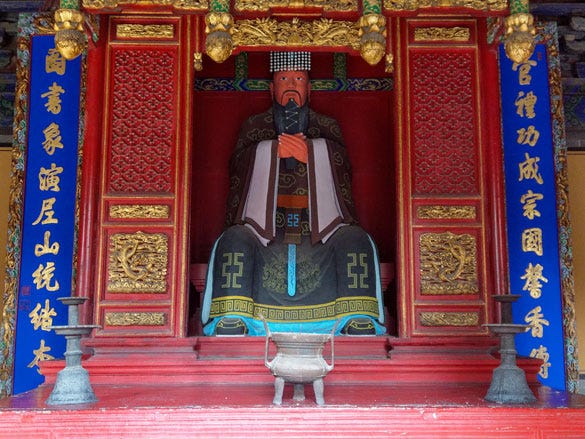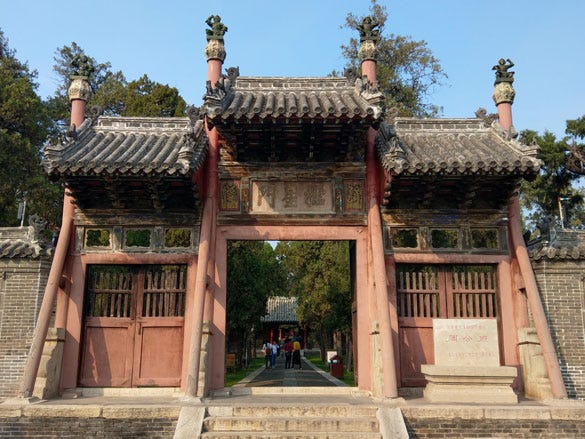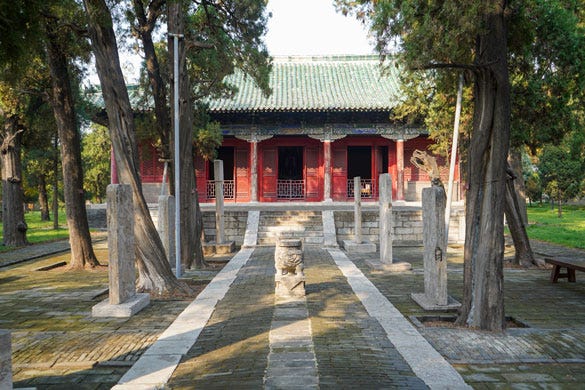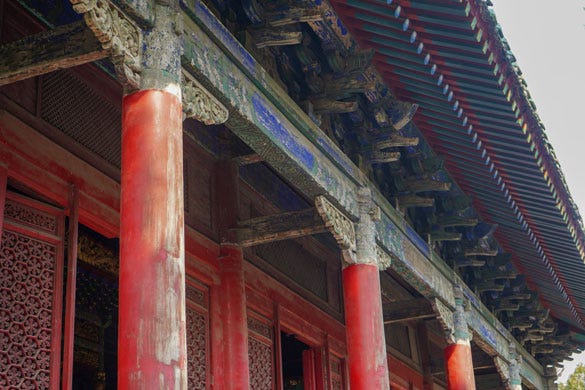Notes from the field: the Temple of the Duke of Zhou

No visit to Qufu should be complete without a visit to the Temple of the Duke of Zhou. The traditional Zhou dynasty rituals that were carried out at the temple in honor of Confucius’s great hero were the primary source of inspiration for the sage’s philosophy and teachings. They provided the living and breathing symbols that fueled his calls for a return to the golden age at the beginning of the Zhou dynasty when China reached its zenith under the duke’s wise and benign leadership.
The Duke of Zhou (周公) was the fourth son of King Wen of Zhou (周文王), the spiritual founder of the Zhou dynasty. He played an instrumental role in helping his second oldest brother, King Wu (周武王), to defeat the Shang dynasty (商朝) at the Battle of Muye (牧野之戰) in around 1046 BCE and formally establish the dynasty.

In recognition of his service, King Wu granted his younger brother the fiefdom of Lu. Its capital was the city of Qufu. When King Wu died just two years later, the duke became the regent for his brother’s baby son, vowing that he would give up the role when his nephew reached his majority.
As regent, the duke fought off a series of rebellions from disgruntled Shang dynasty loyalists and two his brothers, who accused him of usurping power for himself. After putting these rebellions down, he set about implementing a new feudal system that provided the foundation of what was seen by Confucius as a golden age of just government and universal prosperity. His establishment and promotion of elaborate ritual ceremonies played a key role in embodying the grandeur and vales of the new Zhou dynasty.

True to his word, the duke handed the reins of government to his nephew when he reached adulthood and acted as a close advisor to the young man until his death. When the duke passed away, his nephew decreed that the his descendants had the right to perform the court rituals and music of the Zhou dynasty. As a result, the Temple of the Duke of Zhou became the home of traditional Zhou dynasty culture, preserving it long after other parts of China had abandoned it.

The temple was destroyed in around 250 BCE when Lu was conquered by the state of Chu. It was rebuilt over a thousand years later in 1008 AD during the Northern Song Dynasty and has undergone six major renovations since then. The magnificence of its buildings and the beauty of its grounds provide a fitting tribute to one of the great legendary heroes of Chinese history and the inspiration of one of its greatest philosophers.
